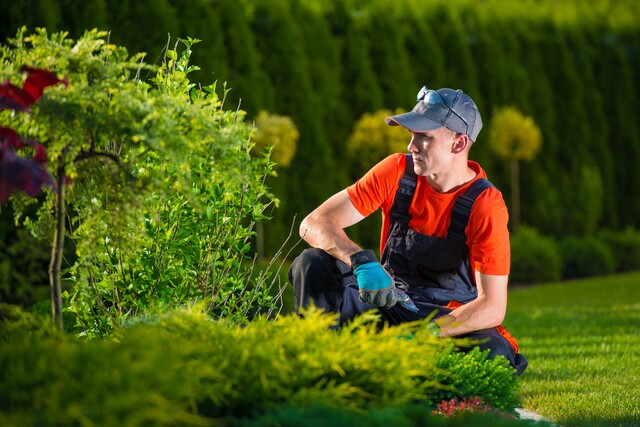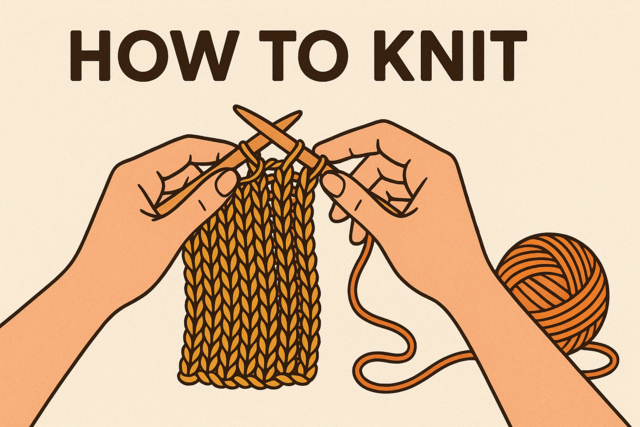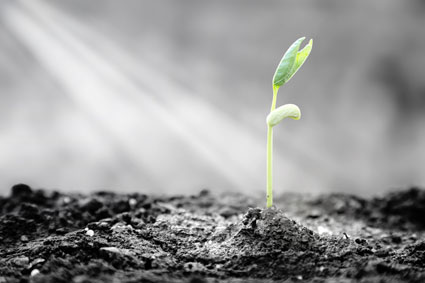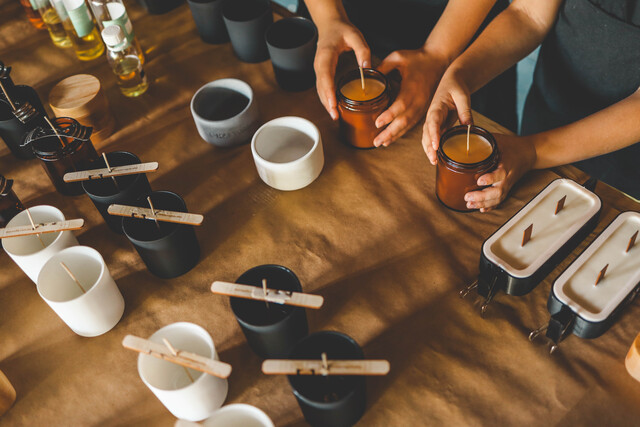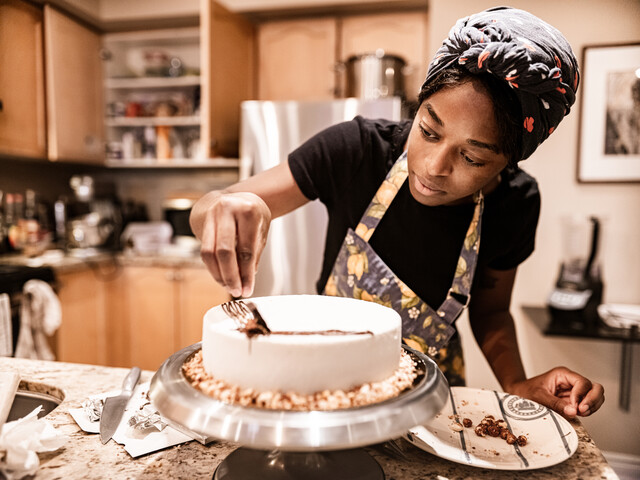Flower Arrangement: Working with Silk and Real
When to Use Silk
There are some instances when real flowers are not the best choice. Some people need flowers that will stand up to a longer period of time. Let's say you get married early in the morning, but your reception isn't until much later in the day, flowers will likely be limp and wilted by the time the reception starts. In this type of case, you might consider using silk flowers so that the bouquets, corsages, boutonnieres, and all the table decorations still look as fresh as when they were created.
Some people prefer to use silk flowers in home arrangements because they last a long time without needing to be watered every other day and without fear of dirt or water stains throughout the house. Most silk flowers are easily refreshed by wiping the dust off and they look as fresh as the day they were arranged.
There are a group of people who have very severe allergies and cannot tolerate being around live flowers. There are two sisters, both of whom love to arrange flowers. One of them developed a significant allergy to live flowers later in life and at first she feared that she would have to give up her career. Fortunately, silk flowers have made such great advances that it is often difficult to tell when an arrangement is made from silk and when it is made from live flowers. She was able to stay on in her career and continue doing the thing that she loves best, arrange flowers.
Silk flowers have no season. You can order any flower, in any amount, at any time of the year and not have to worry if they will be available for your event. These are certainly enough reasons to consider making arrangements with silk flowers. They will be things of beauty and longevity, and most people will have to actually touch them to discover whether or not they are live or silk.
Tips and Tricks in Arranging
What to Look For
When you start working with silk flowers, you will immediately notice a difference in the flowers that are available to you. The most reasonably priced flowers are often unnaturally colored and don't quite represent the form of real flowers.
If you want to fool the eye, you will want to spend the appropriate money and get the higher quality silk flowers that are virtually indistinguishable from the real thing. You'll be creating a floral arrangement that will last for years, so spend appropriately. You will be very happy that you did.
Advantages vs. Disadvantages
The advantages of working with silk or artificial flowers are these:
-
Longer lasting arrangements for lengthy events
-
Decreased staining and dirt around the home
-
No allergies
I was stunned by the quality of the flowers and the artistry with which they were designed. Just because you are working with silks, doesn't mean you can ignore the rules of floral arrangement. The very same rules apply to working with silks as working with fresh cut flowers.
One other advantage is that you don't have to clean and condition your silk flowers. They are available in perfect and pristine condition. This makes your arranging job that much easier!
What makes your job more difficult is that once they are arranged, you don't want to be changing things too much, otherwise your foam will become unstable, and your entire arrangement will be compromised.
Tips and Tricks for the Greatest Success in Arranging
In order to create life-like silk arrangements, you will proceed exactly as you would when creating a fresh cut arrangement. All elements that are important in fresh flower arranging hold true when working with artificial flowers.
Consider carefully the arrangement and its ultimate purpose. Plan your colors and flowers based on this purpose. You should never put an arrangement together without this kind of preparation.
What is their purpose, the season, the room they'll be displayed in? Answers to these questions will help you to determine what colors you'll use, the types of flowers you'll use, and the size your ending arrangement will be.
One of the greatest advantages of working with artificial flowers is that you can generally position flowers in their exact position. This makes it possible to create true works of art with artificial flowers.
Resin Kits
Because you are creating a work of art, you need to know how to complete the illusion of fresh cut flowers in a vase of water. Nothing gives the impression of "fresh and clean" like fresh-cut flowers. By arranging your silk flowers in an identical manner to your fresh-cut flowers, you can achieve identical arrangements that will last for a very long time.
The "water" at the bottom of the glass vase is actually a two-part resin that when combined creates a hard and permanent compound that looks just like water, but will never spill once it is set.
Get a flower water resin kit from the same place you purchased your good-quality silks. It might be called an "acrylic water kit" or something similar, but they are all designed to function exactly the same way. Note: Any product that is made of acrylic will begin to yellow over time, especially if exposed to sunlight. To prevent this type of yellowing, you should choose a urethane simulated water kit.
Before you start, decide on the container you plan to use and make sure that it is scrupulously clean. I like to run most glassware through the dishwasher that leaves your glassware gleaming.
BEFORE MIXING: Arrange the flowers exactly as you plan to use them in the vase. I recommend starting with a simple arrangement for your first project, and make certain you don't need more fluid than your kit contains. One kit may have two 4-ounce bottles, that when combined will create one cup of "water".
If you're making a large arrangement and need more "water" than that, you need to purchase either a larger kit, purchase two of the same kit, or use pebbles or marbles in the base of the arrangement to take up some of the room.
I always measure with water and marbles in place, but will then wait a day or two to make sure everything is completely dry before proceeding with the "acrylic water" which will not mix well with real water at all.
Plan your arrangement exactly. Cut all stems that need to be cut, and arrange it exactly as you wish it to look. Next, take your flowers and greenery out and line them up on the table in the order that they will be placed into the vase.
Mix your acrylic or urethane water according to the package instructions. Generally, it is a 50/50 mix. Mix thoroughly, but avoid introducing air bubbles which may not go away after the arrangement is completed. Make sure there is nothing in the vase, no dirt or debris. When you pour the mixture into the vase, don't splash any on the sides. One way to accomplish this is to use a PVC tube. Pour the mixture through the tube where it will pool into the bottom of the vase without splashing anything on the sides.
Place your stems according to your arrangement design. Try not to reposition stems more than necessary. Work quickly and accurately. Once everything is in place, put the vase and arrangement in a safe place, it will take between 12 and 24 hours for the artificial water to set up.
Preserved Flowers:
This is an option for people who like the look of real flowers, but hate having their arrangements fading and dying in a week or so. Many methods have been used to preserve flowers, and one of the very best is by using glycerine, which is a form of antifreeze. Using glycerine allows the plant material to become flexible, water resistant and can either just extend the lifespan of your plant materials, or it can last a lifetime.
One of the best reasons for using glycerine is that the texture of the plant material is unchanged. When you preserve flowers by drying them (by any method) they become fragile and paper thin. With the glycerine, your plant material is much more life-like.
Mix one part glycerine with two parts boiling water and mix well. Allow this to come to room temperature before you put your stems in the treated water, otherwise you'll shock your plants.
I know, this sounds fantastic, right? The problem is that it is only suitable for certain types of plant material. It is usually much better when it is used for foliage rather than colorful flowers. Long-lasting evergreens such as juniper, and other materials that have smooth-textured leaves like beach, tree ivy, and eucalyptus. One flower that does well with a glycerine treatment is heather as it will not change into a funky color when it is infused with the glycerine water.
Most plant material will change color slightly. Some plants will change color dramatically! The best way to find out if it will work for your plants is to just try it. You can even experiment by adding food dye to the water before you immerse the plant material into it to see if it will help counteract the color change. At the very least, most colors become much more subdued, but this can still make for an exquisite arrangement.
-
Mix 2 parts boiling water with one part glycerine. If you want to add dye, this is a good time to do it. Allow this to come to room temperature.
Trim your flowers or foliage stems, remove any damaged leaves, and place in the water for several hours. It will take this long for the plants to become fully turgid and firm from the water. Now place your stems into the glycerine mixture. Make sure no leaves are low enough to be covered by the mixture. Place in a warm, dry place to keep mold from forming.
I've used glycerine treated evergreen branches in many arrangements.
Daffodils are believed to have earned their name from the word asphodel (genus of perennial plants native to western, southern and central Europe) and the Dutch article "de affodil". Another widely known name for them is Narcissus.
All species of Narcissus have the alkaloid poison named lycorine in bulbs and also in the leaves. BEWARE: Daffodil bulbs can be confused with onion while cooking and may lead to poisoning.
Daffodils are cultivated for commercial use for making galantamine, a drug used for the treatment of Alzheimer's disease.
In the west, daffodils symbolize vanity while in the East, they are a symbol of wealth and good fortune.
The daffodil is the national flower of Wales.



